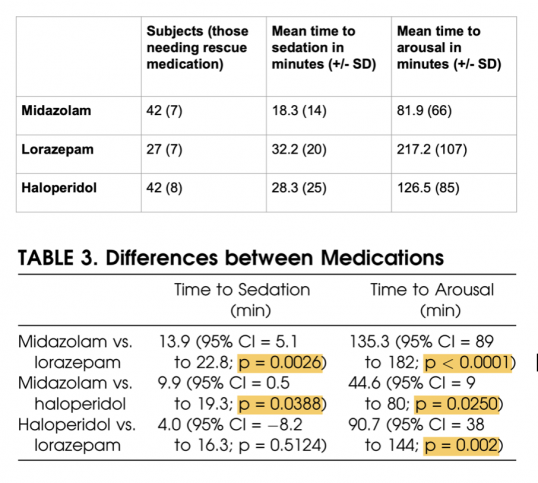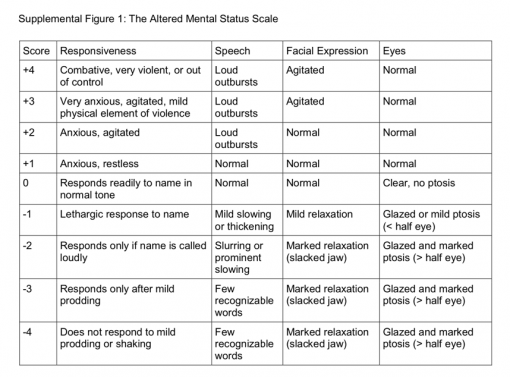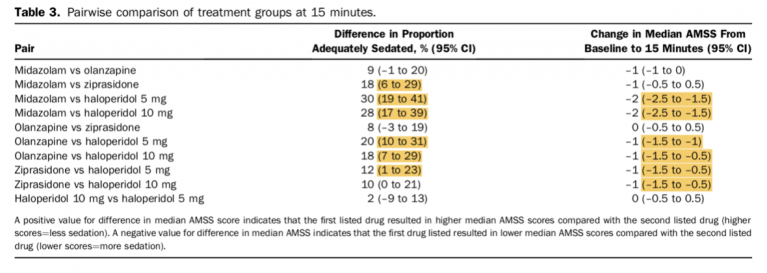#EMConf: CAT Benzo vs Antipsychotic for sedation
The bottom line:
Multiple options are available for ED providers to use to sedate agitated patients in the ED
5mg of intramuscular (IM) Midazolam (versed) has been shown to be a more effective form of sedation at 15 min in comparison to antipsychotics like IM haloperidol (haldol) and IM ziprasidone (geodon)
5mg of IM midazolam has also been shown to have a shorter time to sedation than IM lorazepam (ativan) and IM haldol
5mg of IM midazolam has been shown to have a quicker time to arousal than IM lorazepam and haldol
Workflow in the ED may be more efficient with the use of IM midazolam if patients are sedated quicker, but then also able to be woken up and dispositioned quicker
Study 1: Nobay 2003
Single center, prospective, double-blind, randomized trial of 111 agitated patients in a single ED who were chemically sedated using either 5mg IM versed, 5mg of IM haldol, or 2mg of IM ativan.
Objective: wanted to determine if versed was a more superior drug than haldol or ativan in regards of time to sedation and time to arousal

Limitations: Study was conducted with convenience sampling - this could lead to a selection bias of which patients are coming into the ED, and when. They did not enroll any patients overnight. Another limitation is that they did not use a previously validated sedation/arousal scale. However, they believed that what they chose to do was objective and easy to replicate. They also did not distinguish the types of drug use or psychiatric conditions people had who were enrolled in the study.
Study 2: Klein 2018
Single center, prospective observational study of 737 patients comparing the use of IM midazolam vs olanzapine vs ziprasidone vs haloperidol for treating agitated patients in the ED
Primary objective was to determine the proportion of patients adequately sedated at 15 minutes after drug administration

“Adequately sedated” patients were considered at a score of “-1”

Limitations: They were unable to do a randomized control study because the IRB did not feel patients could give informed consent. Instead they used an observational design that implemented the use of clinical care protocol guiding agitation treatments. They tried to combat the lack of randomization and blinding by enrolling large blocks of consecutive patients 24 hours a day. Another limitation was that most of their patients were acutely agitated because of alcohol intoxication rather than other causes. The study authors said that fit with their geographic location.
References:
Nobay F, et al. A Prospective, Double-blind, Randomized Trial of Midazolam versus Haloperidol versus Lorazepam in the Chemical Restraint of Violent and Severely Agitated Patients. Academic Emergency Medicine 2003;11(7):744-749.
Klein L, et al. Intramuscular Midazolam, Olanzapine, Ziprasidone, or Haloperidol for Treating Acute Agitation in the Emergency Department. Annals of Emergency Medicine 2018;73(4):374-385.
